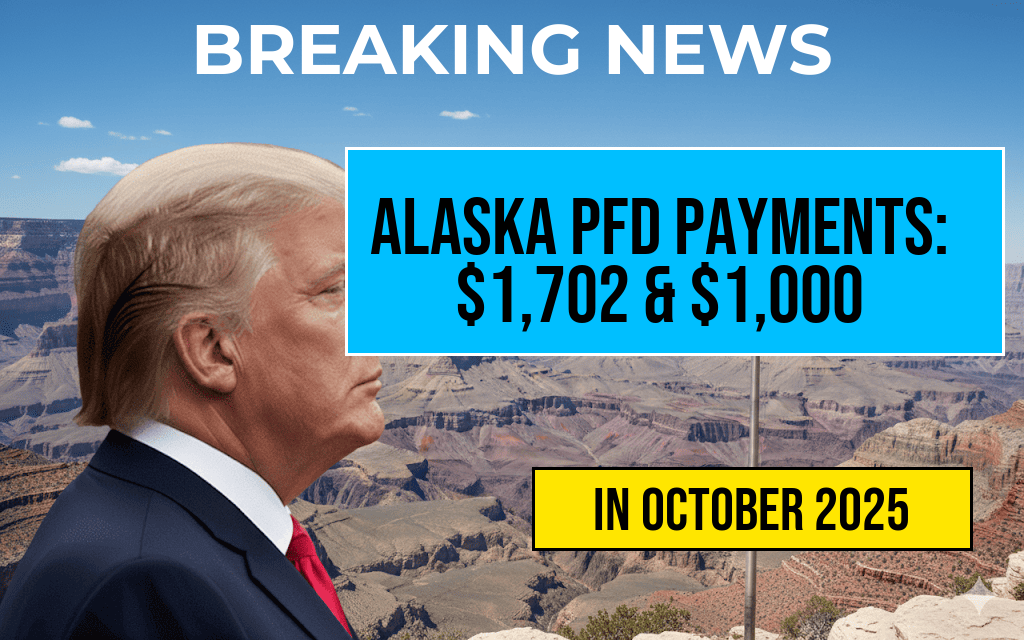The Alaska Permanent Fund Corporation has officially confirmed the upcoming **Permanent Fund Dividend (PFD)** payments for 2024 and 2025, setting the amounts at **$1,702** for the 2024 payout and **$1,000** for 2025. These payments, which are distributed annually to eligible Alaskan residents, continue to serve as a significant financial benefit linked to the state’s natural resource revenues. The distribution schedule and eligibility criteria have remained consistent, but the payout amounts are influenced by the fund’s performance and broader economic factors. Residents eager to know when their checks will arrive can look forward to the traditional distribution window, with payments typically issued in October. As the state prepares for these disbursements, questions about eligibility, direct deposit timing, and the impact of recent economic changes are common among Alaskans and prospective recipients alike.
Details of the 2024 and 2025 PFD Payments
Confirmed Payment Amounts
| Year | Payment Amount |
|---|---|
| 2024 | $1,702 |
| 2025 | $1,000 |
The **$1,702** payout for 2024 marks a slight decrease from the record-high amounts seen in some previous years, reflecting fluctuations in the fund’s earnings. Meanwhile, the projected **$1,000** for 2025 indicates a stabilization, contingent on the fund’s performance and economic conditions. These figures are based on projections provided by the Alaska Permanent Fund Corporation, which manages the state’s sovereign wealth fund and distributes dividends annually.
When Will Payments Be Distributed?
Historically, the Alaska Department of Revenue begins issuing PFD payments in October, with most residents receiving their checks within the first week. The exact date varies depending on the method of delivery and processing times. The department encourages eligible recipients to confirm their mailing addresses and bank account details before the payout begins to avoid delays.
Eligibility and Application Process
Who Qualifies for the PFD?
- Alaska residents who meet the minimum residency requirements for the year of application.
- Individuals who have maintained a continuous residence in Alaska for at least one calendar year prior to the application date.
- Applicants must not be incarcerated or on active military duty outside the state during the eligibility period.
- Dependents and minors can also qualify if their guardians apply on their behalf.
Application and Verification
The application window typically opens in January and closes in March, with eligible residents encouraged to apply early. The process involves verifying residency, social security numbers, and other personal information. Those enrolled in direct deposit will see funds transferred directly into their bank accounts, usually within days of the official payout date. Others receiving paper checks should expect delivery via mail shortly after the distribution begins.
Economic Factors Influencing the PFD
Fund Performance and Payout Fluctuations
The size of the PFD is directly tied to the annual performance of the Alaska Permanent Fund. Investment returns, oil revenues, and other economic factors influence the fund’s value, which in turn determines dividend amounts. In years of higher earnings, payouts tend to be larger, whereas lower returns result in smaller dividends. The 2024 payout reflects a cautious approach, balancing recent economic trends with the fund’s current health.
Public Discourse and Budget Considerations
Debate around the size of the dividend has been ongoing in the state legislature, with some advocating for larger payouts to address economic disparities and others emphasizing the need for sustainable fund management. Recent legislative proposals have considered adjusting payout formulas or establishing reserve funds to stabilize payments amid fluctuating revenues. For comprehensive information on Alaska’s fiscal policies, visit Wikipedia’s page on the Alaska Permanent Fund.
Additional Resources and Updates
Residents seeking updates on their payments, eligibility, or application status can consult the Alaska Legislature’s official site or contact the Alaska Permanent Fund Corporation directly. For broader economic insights, Forbes offers analysis on how resource revenues impact state economies and dividend policies (Forbes.com).
As the payout dates approach, Alaskan residents are advised to review their banking information and stay informed through official channels to ensure smooth receipt of their dividends. The PFD remains a cornerstone of Alaska’s approach to sharing resource wealth, providing direct financial benefits that support many households across the state.
Frequently Asked Questions
When will the Alaska PFD payments be issued in 2024 and 2025?
The Alaska Permanent Fund Dividend payments are typically issued in October each year. For 2024, the payment is confirmed to be $1,702, and for 2025, it will be $1,000. Exact dates will be announced by the Alaska Department of Revenue closer to the release.
Who is eligible to receive the Alaska PFD in 2024 and 2025?
Eligibility for the Alaska Permanent Fund Dividend generally requires residents to have lived in Alaska for at least 12 months prior to the application deadline and meet other criteria such as intent to remain in the state. Specific requirements are detailed by the Alaska Department of Revenue.
How can I check the status of my PFD payment?
You can check the status of your PFD by visiting the official Alaska Department of Revenue website or logging into your online account. They provide updates on application processing and payment schedules.
What should I do if I haven’t received my PFD check?
If you haven’t received your Alaska PFD by the expected date, contact the Alaska Department of Revenue directly. Possible reasons could include address issues or processing delays. Ensure your contact information is up to date in their system.
Are there any changes in the PFD amounts for 2024 and 2025 compared to previous years?
Yes, the Alaska PFD amounts have increased to $1,702 in 2024 and are set at $1,000 in 2025. These amounts are determined based on the performance of the Permanent Fund and other economic factors, reflecting an increase from previous years.







